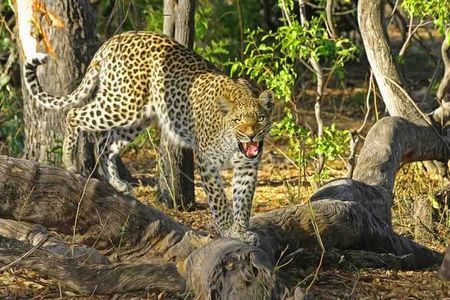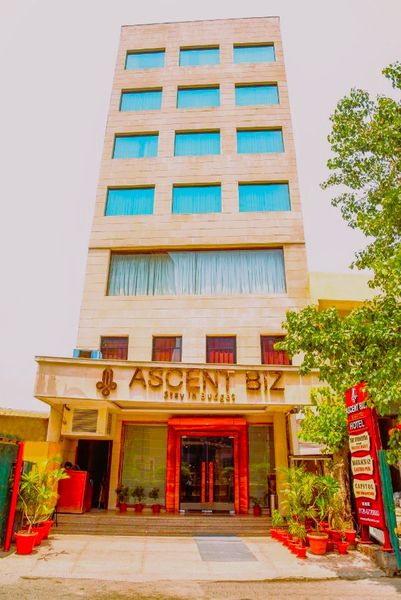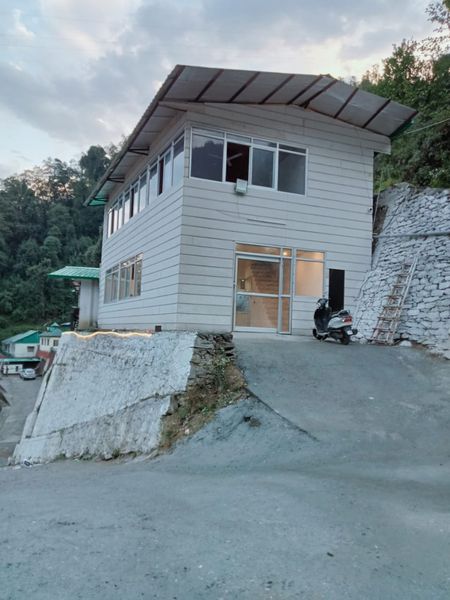Roar in the Aravallis: Experience the Thrill of Amagarh Leopard Safari
 Palakshi Meharwal
12 Aug, 2025
11 mins read
31
Palakshi Meharwal
12 Aug, 2025
11 mins read
31

Nestled in the rugged hills of the Aravalli Range, the Amagarh Leopard Safari offers an unforgettable blend of wilderness, history, and adventure. Situated on the outskirts of Jaipur, Rajasthan, this unique safari destination has been gaining popularity among nature enthusiasts, photographers, and thrill-seekers alike. While Jaipur is world-renowned for its palaces, forts, and vibrant markets, the lesser-known Amagarh region promises a different kind of excitement — the thrill of spotting a wild leopard in its natural habitat.
A Hidden Gem of Jaipur’s Wilderness
The Amagarh Leopard Safari is located near the historic Amagarh Fort, a centuries-old stronghold that quietly watches over the valley. The region’s rocky terrain, dense scrub forests, and water bodies create an ideal habitat for leopards and other wildlife. Unlike tigers, which are usually found in dedicated reserves, leopards adapt well to rocky landscapes and are often spotted here during both morning and evening safari drives.
The beauty of Amagarh lies in its combination of untamed nature and easy accessibility. Located just a short drive from Jaipur city, it allows visitors to switch from bustling urban life to serene wilderness in under an hour. This makes it a perfect day trip for tourists who wish to experience Rajasthan beyond its historical monuments.
The Leopard: The Star of the Safari
Leopards (Panthera pardus) are known for their stealth, strength, and adaptability. In Amagarh, these elusive cats have carved out a territory that stretches across the rolling hills and valleys. They are most active during dawn and dusk, which is why safari timings are carefully scheduled to increase the chances of sightings.
Visitors often find themselves holding their breath as they watch a leopard emerge from behind a rocky outcrop, slinking silently through the grass before disappearing into the shadows. Unlike in crowded tiger reserves, sightings here feel more intimate and personal, with fewer vehicles and a quieter environment.
Wildlife experts suggest that Amagarh is home to multiple resident leopards, each with its own territory. This means repeat visitors often spot different individuals, adding an element of surprise to each safari experience.
More Than Just Leopards
While leopards are undoubtedly the highlight, the Amagarh Leopard Safari offers much more for wildlife enthusiasts. The rocky scrubland is home to a variety of fauna, including:
- Hyenas – Often spotted during evening drives, these nocturnal predators play a vital role in the ecosystem.
- Jackals and Foxes – Agile and quick, they can be seen darting across open patches.
- Nilgai (Blue Bull) – The largest Asian antelope, often grazing in the meadows.
- Peacocks – India’s national bird is abundant here, displaying its vivid feathers during the monsoon.
- Birdlife – From eagles and vultures to smaller species like partridges and kingfishers, the area is a haven for birdwatchers.
The diversity of wildlife ensures that even if a leopard remains elusive during a trip, visitors still leave with memorable sightings and photographs.
The Safari Experience
Leopard Safaris at Amagarh are conducted in open 4x4 vehicles driven by experienced guides. Each guide has an intimate knowledge of the terrain, leopard behavior, and key sighting zones. The routes wind through narrow trails, open clearings, and rocky slopes, providing breathtaking views of the Aravalli hills.
The best time to visit is during the cooler months, from October to March, when wildlife activity is higher, and the weather is pleasant. Early morning safaris offer the chance to witness the forest waking up, while evening drives present the golden light of sunset, perfect for photography.
It’s recommended to book safaris in advance, especially during weekends and tourist seasons, as the number of vehicles allowed in the reserve is limited to maintain ecological balance and reduce disturbance to wildlife.
Amagarh Fort: A Touch of History
A visit to the Amagarh Leopard Safari isn’t complete without exploring the Amagarh Fort. Built in the 18th century by Maharaja Sawai Jai Singh II, the fort has played a key role in Jaipur’s history. Although it is not as grand as Amer or Nahargarh Fort, it offers a raw, unpolished charm.
The fort provides panoramic views of the surrounding forests and hills, making it an excellent spot for sunset photography. Many safari-goers combine their wildlife adventure with a short trek to the fort, blending nature and history in a single trip.
Responsible Tourism and Conservation
The rise in leopard tourism at Amagarh has brought both opportunities and responsibilities. While increased footfall generates income for local communities, it also puts pressure on the fragile ecosystem.
Wildlife authorities have implemented strict guidelines for visitors:
- Maintain silence during the safari to avoid disturbing animals.
- Avoid littering or feeding wildlife.
- Follow the designated routes to minimize habitat disruption.
- Keep a safe distance from all animals.
By adhering to these rules, tourists help ensure that leopards and other wildlife can thrive while still allowing humans to appreciate their beauty.
Tips for an Unforgettable Safari
To make the most of your Amagarh Leopard Safari, keep the following tips in mind:
- Carry binoculars – They greatly enhance wildlife viewing, especially for spotting distant animals.
- Dress appropriately – Wear earthy or neutral colors to blend with the surroundings.
- Be patient – Leopard sightings are never guaranteed; enjoy the overall wilderness experience.
- Use a good camera – Wildlife photography requires a zoom lens for capturing detailed shots from a safe distance.
- Stay hydrated – Even during cooler months, the dry terrain can be dehydrating.
How to Reach Amagarh Leopard Safari
The safari zone is located approximately 15–20 km from Jaipur city center, making it easily accessible by car or hired taxi. Jaipur is well-connected by air, rail, and road to major Indian cities. From the Jaipur International Airport, the safari area can be reached in about 45 minutes.
Why Amagarh Should Be on Your Bucket List
If you are looking for an offbeat wildlife experience that combines natural beauty, rich biodiversity, and cultural heritage, the Amagarh Leopard Safari is hard to beat. Unlike crowded national parks, Amagarh offers a more personal connection to the wild, where each sighting feels special and unrepeatable.
The combination of leopards roaming free, the majestic backdrop of the Aravalli hills, and the timeless charm of Amagarh Fort makes this destination a unique addition to Rajasthan’s tourism offerings. It’s an adventure that doesn’t just give you photographs — it gives you stories to tell.
Written By:
Palakshi Meharwal



Hotels at your convenience
Now choose your stay according to your preference. From finding a place for your dream destination or a mere weekend getaway to business accommodations or brief stay, we have got you covered. Explore hotels as per your mood.


